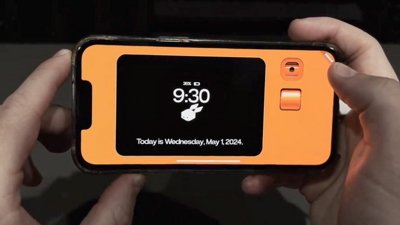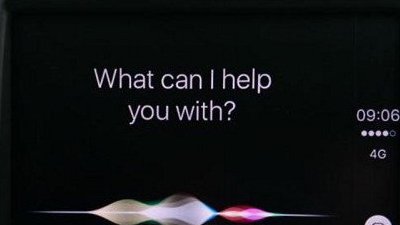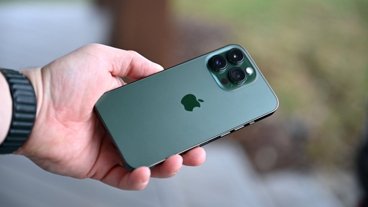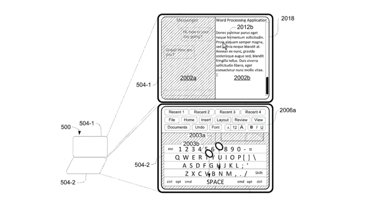Apple concept shows how Touch ID home button could serve as more complex input controller
The technology that drives the Touch ID home button could be used for much more than securely scanning a user's fingerprint — a fact highlighted by a new Apple patent application published this week.
The hidden capabilities of the Touch ID fingerprint sensor can be found by looking to the "Smart Sensor" technology that Apple acquired from AuthenTec in 2012. The company's Touch ID predecessor could be used to provide touch-based navigation, offering precise cursor control when editing text, providing a fast scrolling feature, and more.
Among the additional touted capabilities of AuthenTec's original product: optical joystick emulation.
Those capabilities are noteworthy in light of a new Apple patent application for a "Multi-Function Input Device," as published by the U.S. Patent and Trademark Office. The filing notes that in addition to operating as a traditional button, the sensor could also operate in a "joystick mode," offering a different way to interact with an iPhone, iPad, or any other device.
Unlike the joystick emulation capabilities of the current Touch ID home button, Apple's concept describes a button that could pop out and allow for physical 3D controls like a more traditional joystick.
In the proposed invention, Apple notes that the Touch ID fingerprint sensor could act as normal, flat home button. But the button could be depressed and "click" out, allowing the control capabilities of a joystick.
The most obvious application for this, of course, would be for playing games, but the home button could also be used to control a cursor or offer more precise or unique input methods when the appropriate situation arises.
The filing only serves to spotlight the fact that the Touch ID home button found on the latest iPhones and iPads can be used for much more than just sensing a user's fingerprint. The technology acquired by Apple allows for the button to sense movement and motion of a user's finger, which could allow unique input methods in the future.
While the current implementation cannot pop out to serve as a joystick, it is capable of joystick emulation. By rocking their finger back and forth, the current the button could interpret the motion for onscreen input, whether of a cursor or otherwise.
Touch ID's ability to identify different fingerprints could also be utilized to enable users to quickly initiate different tasks, such as launching specific apps or calling a particular contact, by using different fingers. Another patent application published late last year showed how a combination of Touch ID and fingerprint motion could allow advanced "combination unlock" methods for future iPhones.
 Neil Hughes
Neil Hughes














 Malcolm Owen
Malcolm Owen

 William Gallagher
William Gallagher


 Charles Martin
Charles Martin
 Andrew Orr
Andrew Orr









11 Comments
TouchID rules. I don't see anything that even comes close to it in term of usability and reliability. $356 million of AuthenTec acquisition paid off well, Apple.
It's like the thinkpad eraser nub mouse, without the aggravation.
As said many times, Touch ID will/can be a mini mouse, potentially in future mac trackpads.
As said many times, Touch ID will/can be a mini mouse, potentially in future mac trackpads.
Maybe on a Samsung product. Certainly not on an Apple product.
The recently mentioned Force Touch would seem to render a mechanical application moot. Moving parts always being more vulnerable than solid state.